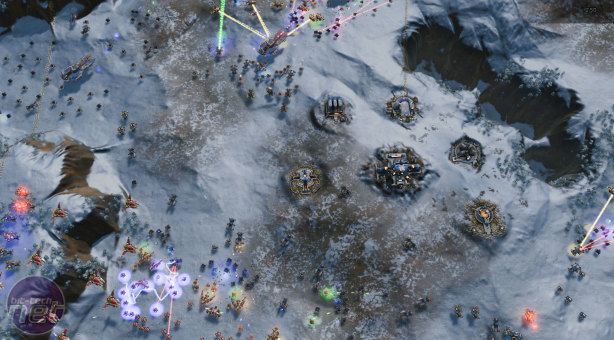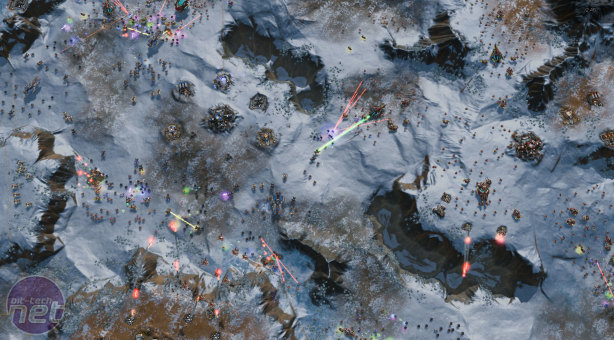DirectX 12 Testing with Ashes of the Singularity
April 19, 2016 | 10:08

DirectX 12 Testing with Ashes of the Singularity
While Ashes of the Singularity has been around for some time in various states of development, it was only officially released at the end of March. It's among the very first wave of DirectX 12 games that are now emerging, so we thought it would be worth doing a quick bit of benchmarking to see how the current hardware stacks up. This also gave us an excuse to upgrade our graphics test rig to Windows 10 finally, in preparation for further DirectX 12 testing and for when Nvidia Pascal and AMD Polaris see the light of day later this year.Ashes of the Singularity is a real-time strategy game that features large scale battles with hundreds of units and individual ballistic calculations for every shot. In short, there's a lot going on, and the game is developed specifically to exploit DirectX 12 capabilities like large draw call counts and asynchronous compute (scheduling and executing multiple queues all at once). The game even supports the API's Explicit Multi-adapter feature, allowing AMD and Nvidia cards to be paired up multi-GPU rendering scenario, although that's not the focus here.
The game comes with a handy built-in benchmark, giving us a good baseline for consistency, and it is also designed to showcase some of the game's most demanding aspects, just as any good benchmark does. The game spits out masses of frame data at the end of the three-minute run, but for our main comparisons we'll be using data from a sixty-second FRAPS recording (which works for benchmark recording, just not for overlay) of the benchmark's first minute. This gives us a quick and easy way to compare minimum frame rates as well as the average – the minimum is generally more important as it's this that you'll feel and remember the most when playing.
Due to time constraints, this is a relatively short and light article designed really just to give a snapshot overview of performance as it is today and to give us a basic set of data to work with in future benchmarks, which will be important when the new wave of cards are released. We have focussed on high-end, current generation cards i.e. the AMD Radeon R9 390 and upwards and the Nvidia GeForce GTX 970, GTX 980 and GTX 980 Ti.

MSI MPG Velox 100R Chassis Review
October 14 2021 | 15:04











Want to comment? Please log in.